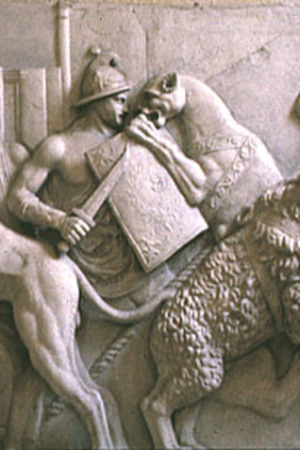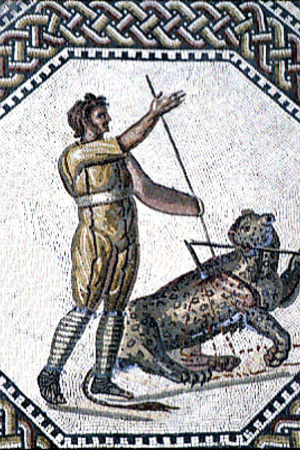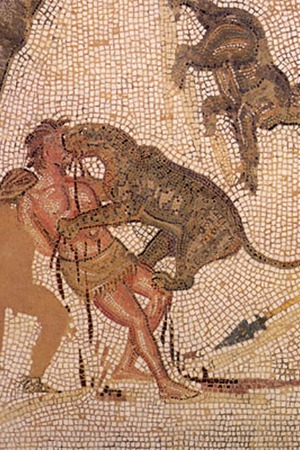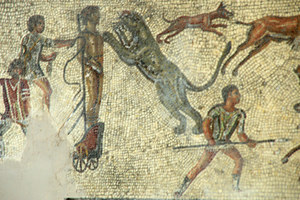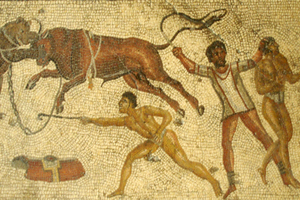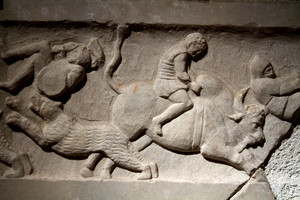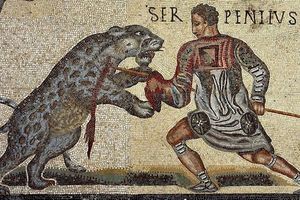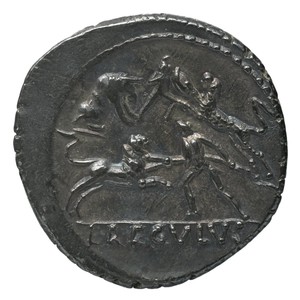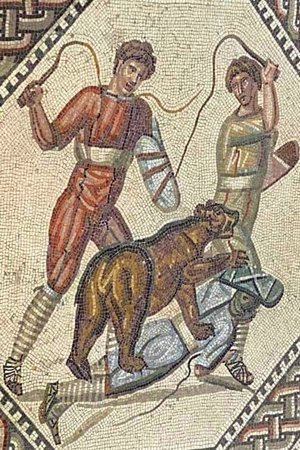Bestiarius
A bestiarius (Latin: bestiarius) was an ancient roman gladiator who fought against animals in the arena. The name derives from the Latin word "bestia," which means "beast" or "animal." The earliest bestiarii were poorly armed, and sometimes they were even left without weapons. This was due to the fact that initially, combat with ferocious animals served as a means of executing criminals sentenced to death. They lacked gladiatorial training and did not enjoy public sympathy. A little later, the condemned were given simple weapons like spears, but their bodies remained exposed and vulnerable. These encounters were more like spectacles of taunting the predators for the amusement of the audience.
Over time, the popularity of battles with animals grew, and they began to evolve into something more than mere executions. In later times, bestiarii underwent special training in schools called bestiariorum or scholae bestiarum and fought against animals for money. They were better equipped, and their battles more often ended in the victory of the bestiarii.
Unlike other types of gladiators, bestiarii did not have a standard set of equipment. In terms of protection, reliefs sometimes depict them wearing greaves, manica (armguards), and various shields. Their weaponry consisted of a spear (gasta) and a sword (gladius). Bestiarii were also among the few types of gladiators who were allowed to wear a tunic.
Related topics
Gladiator, Venator, Ocrea, Manica, Shields, Gasts, Gladius

 Gallery
Gallery






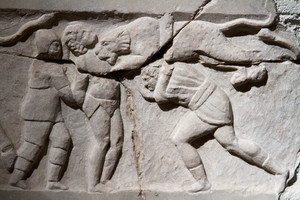 Bestiaries. Marble. Germiyan Village, Malkara-Teridağ. Инв.№ 1219 T. Istambul Museum of Archeology. 2-3 century AD
Bestiaries. Marble. Germiyan Village, Malkara-Teridağ. Инв.№ 1219 T. Istambul Museum of Archeology. 2-3 century AD 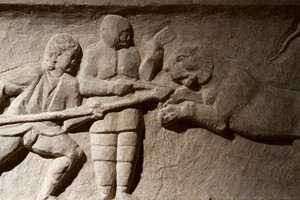 Bestiaries. Marble. Germiyan Village, Malkara-Teridağ. Инв.№ 1219 T. Istambul Museum of Archeology. 2-3 century AD
Bestiaries. Marble. Germiyan Village, Malkara-Teridağ. Инв.№ 1219 T. Istambul Museum of Archeology. 2-3 century AD